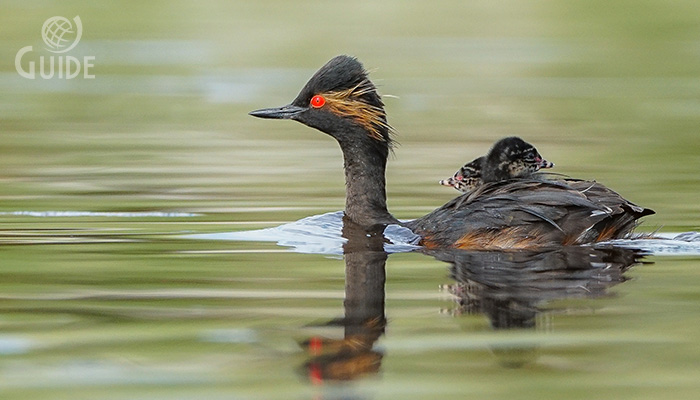
English: Black-necked
Grebe (Eared Grebe)
Russian: Черношейная поганка
German:
Schwarzhalstaucher
French: Grebe a
cou noir
Mongolian: Халтар шунгуур
Japanese:ハジロカイツブリ(Hajiro-kaitsuburi)
Body length: 28-34cm
Wing span: 41-60cm
Passage migrant
Breeding season: May August
Egg number:
3-4 (occasionally 5)
Egg color: Smooth and white.
Brood: 1 per year
Global
Status: Least concern
Regional status: Least concern
Food: Aquatic invertebrates, fishes and plant
matter.
Habitat: Breeds,
usually in small colonies, on shallow ponds and lakes with much emergent
vegetation, frequently associated with Black-headed Gulls or Black Terns;
prefers access to rather large patches of open water. Winters on coasted waters,
lakes, reservoirs in W and S Europe.
Identification:
Slightly smaller than Slavonian Grebe, and more elegant with thinner neck.
Dumpy body and usually prominent ‘powder-puff’ rear end give shape recalling Little
Grebe; steep forehead, with crown rounded or peaking over eye; bill rather
tiny, uptilted to sharp point (shape obvious only at close range). In flight,
white on secondaries extends to inner primaries, and lacks white shoulder
patch.
Adult summer:
Note specially drooping, thin fan of yellowish-white cheek feathers.
Adult winter:
Head pattern less sharply contrasting black and white than Slavonian (but
beware distance or bright light) because of grey downward bulge on rear
ear-coverts; prominent whitish ‘hook-back’ up sides of nape.
Caution:
Juvenile little Grebe can show similar head pattern, but coloration dark
brown/buff (not black/grey/white); also eye black, and different bill shape.